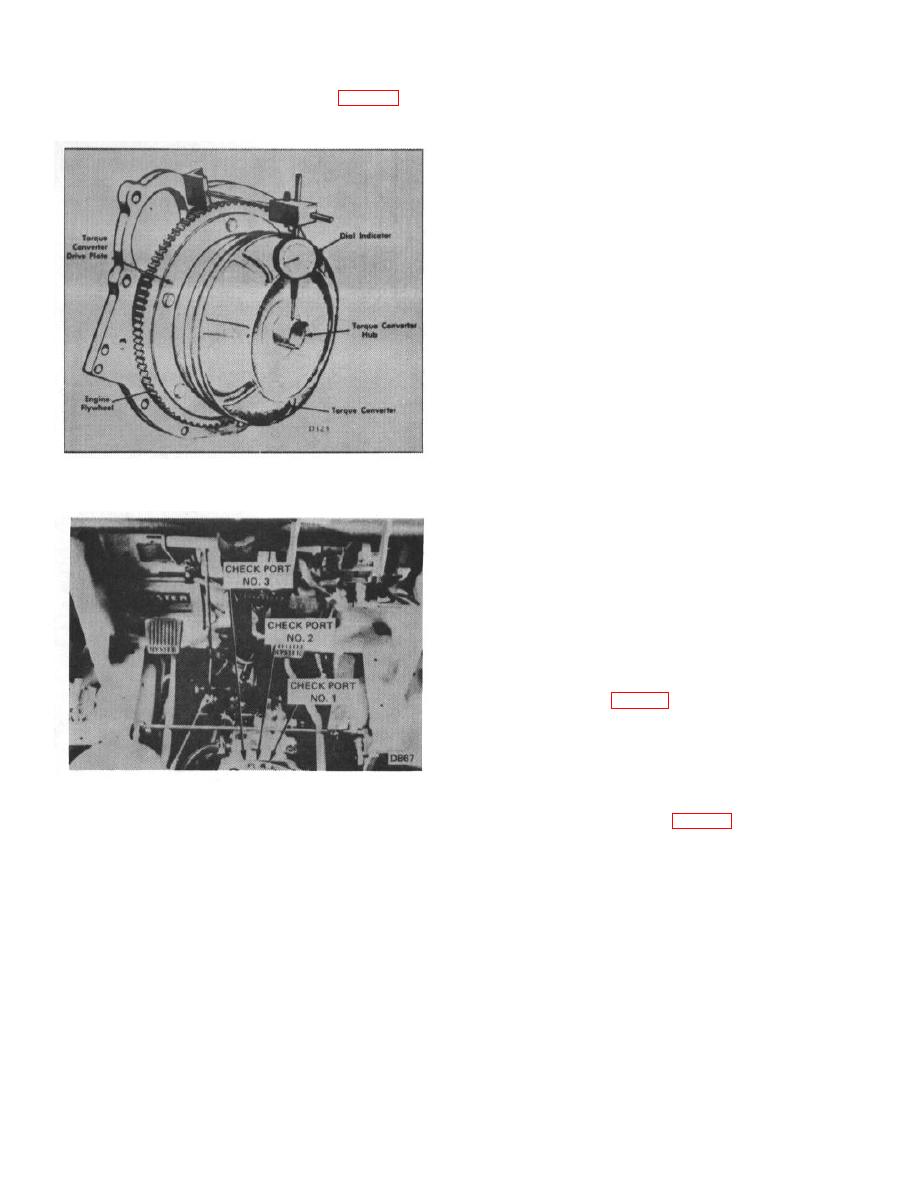 |
|||
|
|
|||
|
|
|||
| ||||||||||
|
|
 TRANSMISSION
the plug at pressure check port No. 1. (Fig. 42)
Fill
2. With the transmission in gear, apply full throttle
this port with oil to furnish initial pump lubrication.
and check engine speed with the truck stationary.
CAUTION:
Under no circumstances apply full
throttle longer than 30 seconds.
Otherwise the torque converter may
become overheated and possibly
damaged.
3. If the engine and converter are in good
condition, the stall speed should be within 100 RPM of
the specified stall speed of a given truck. Refer to the
Engine Section for stall speeds.
4. If the stall speed is 100 or 300 RPM slower than
that specified, it is a general indication that engine
performance is down.
Check carburetion, timing,
valves, etc.
5. If the stall speed is 400-500 RPM slower than
that specified and the engine is in good condition, the
Figure 41.
converter stator is slipping and entire converter
assembly must be replaced.
6. If the stall speed is more than 100 RPM higher
than the specified speed, it is an indication that the
clutch pack is slipping.
CONTROL VALVE
The control valve may be removed by disconnecting the
attaching hoses and disconnecting the linkage from the
directional spool, (Fig. 43) Remove the five capscrews
that hold the control valve to the transmission housing.
Hold the control valve in place while removing the last
capscrew, as the seat for the converter outlet check ball
is behind the control valve. Slide the control valve away
from the housing, being careful not to lose the ball from
this check valve. The porting plate may be removed to
Figure 42.
complete the disassembly. (Fig. 44)
F. CHECKS
1. With the truck thoroughly warmed-up, put a load
on the forks and set the emergency brake.
NOTE:
It may be necessary to run the truck
against some heavy object to prevent
it from moving while making the test.
B-109
|
|
Privacy Statement - Press Release - Copyright Information. - Contact Us |